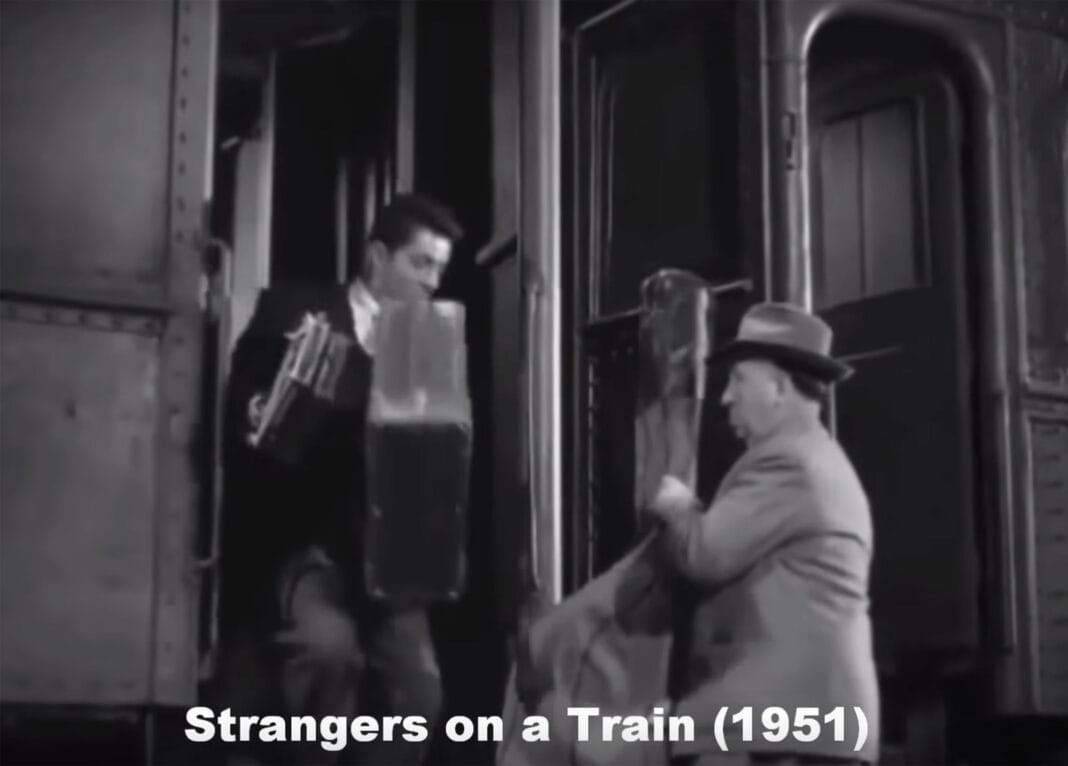A Journey Through the Cameos of the Master of Suspense: Alfred Hitchcock
Alfred Hitchcock, the legendary filmmaker known as the “Master of Suspense,” has captivated audiences for decades with his thrilling narratives and unique storytelling techniques. But did you know that he also made cameo appearances in 40 of his films? These brief moments of self-insertion have become iconic in their own right, adding an extra layer of intrigue to his cinematic masterpieces. This year, we invite you to embark on a delightful journey through a supercut video that showcases every single one of these cameos, spanning from 1927 to 1976. It’s a fascinating look at Hitchcock’s playful side, revealing the man behind the suspense.
The supercut, edited and posted by YouTube user Morgan T. Rhys, presents a comprehensive collection of Hitchcock’s cameos, beginning with his first in The Lodger: A Story of the London Fog (1927) and concluding with his final appearance in Family Plot (1976). This engaging video not only highlights Hitchcock’s notable cameos but also offers a nostalgic reminder of cinema history. Each cameo is a small, yet significant, piece of the puzzle that paints a picture of Hitchcock’s multifaceted personality.
The journey through the supercut showcases some of Hitchcock’s most memorable appearances. One such moment is in Strangers on a Train (1951), where he boards a train with a cello, an image that has become synonymous with his quirky humor. Another standout is his fleeting glance in Stage Fright (1950), which is both charming and unforgettable. These cameos not only illustrate his talent but also his self-awareness as a filmmaker, understanding that he could become part of the narrative in a playful yet distracting manner.
Hitchcock’s cameo tradition began somewhat accidentally. According to Wikipedia, during the production of The Lodger, an actor failed to show up, prompting Hitchcock to step in. This serendipitous moment marked the beginning of a beloved tradition that would continue throughout his illustrious career. The video serves as a testament to this legacy, giving fans a chance to spot the Master of Suspense hiding in plain sight across his extensive filmography.
The supercut not only showcases the cameos but also emphasizes Hitchcock’s comedic sensibilities, often contrasting the suspenseful themes of his films. As the supercut traverses through time, it highlights the evolution of Hitchcock’s style—from the silent film era to the colorful vibrancy of his later works, each cameo reflecting the changes in both his personal artistry and the film industry at large.
For those eager to delve deeper into Hitchcock’s world, the original video can be found on YouTube. It’s a delightful watch for both seasoned Hitchcock aficionados and newcomers alike, providing a valuable context to understand the man behind the camera. You can also explore a full list of his cameos on Yardbarker or check out the Wikipedia list.
Interestingly, during a discussion with filmmaker François Truffaut, Hitchcock referred to his cameos as ‘troublesome,’ as the audience’s anticipation often distracted them from the film’s narrative. To counter this, he made it a point to appear within the first five minutes of his films, allowing the audience to refocus on the story. It’s a clever tactic that speaks volumes about his understanding of audience engagement and narrative flow.
Conclusion
In conclusion, the supercut celebrating Alfred Hitchcock’s cameos is more than just a compilation of clips; it’s a celebration of a cinematic genius who understood the delicate balance between suspense and humor. As we revisit these moments, we gain insight not just into his films, but into Hitchcock himself—a man who never took himself too seriously, despite his monumental impact on the film industry. So, sit back, enjoy the supercut, and remember to spot the man who made suspense an art form.
FAQs
1. How many cameos did Alfred Hitchcock make in his films?
Alfred Hitchcock made cameo appearances in a total of 40 films throughout his career, starting from 1927 and continuing until 1976.
2. What was the first film where Hitchcock made a cameo?
His first cameo was in The Lodger: A Story of the London Fog (1927), which marked the beginning of this now-iconic tradition.
3. Why did Hitchcock start making cameos in his films?
The tradition began when an actor failed to show up during the production of The Lodger, prompting Hitchcock to fill in, thus starting a playful trend in his filmmaking.
4. Which is the most memorable Hitchcock cameo?
While opinions may vary, one of the most memorable cameos is in Strangers on a Train (1951) where he appears with a cello, showcasing his unique sense of humor.
5. How can I watch the supercut of Hitchcock’s cameos?
You can watch the supercut video on YouTube, where it is available for free.
6. What was Hitchcock’s view on audience anticipation for his cameos?
Hitchcock referred to the anticipation of his cameos as ‘troublesome’ because it often distracted the audience from the film’s narrative.
7. How does the supercut relate to Hitchcock’s filmography?
The supercut spans his entire filmography, showcasing his evolution as a filmmaker and the thematic changes in his work from silent films to color.
8. Where can I find a complete list of Hitchcock’s cameos?
You can find a full list of Hitchcock’s cameos on Yardbarker or on Wikipedia.
9. How did Hitchcock’s cameos impact his films?
His cameos added a layer of humor and self-awareness, inviting the audience to engage with his films on a different level while also highlighting his playful character.
10. What is the significance of Hitchcock’s cameo tradition?
The cameo tradition reflects Hitchcock’s unique approach to filmmaking, blending suspense with humor and creating an engaging experience for viewers who enjoy seeking him out in his films.
Tags
Alfred Hitchcock, Cameos, Film History, Cinema, Supercut, YouTube, Movie Review

